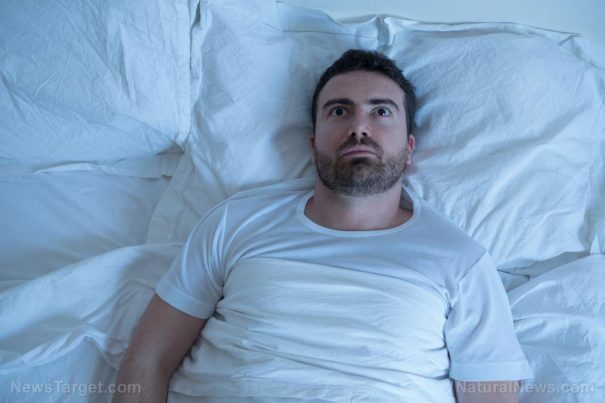
Chlordiazepoxide – uses, health risks, and side effects at NaturalPedia.com
Wednesday, August 22, 2018 by Ralph Flores
http://www.naturalpedia.com/chlordiaz-uses-health-risks-and-side-effects-at-naturalpedia-com.html

Chlordiazepoxide (brand name: Librium) is a drug used to relieve symptoms experienced with anxiety disorders, including excessive anxiety and tension. It is also prescribed to control symptoms caused by alcohol withdrawal, the most common of which is agitation. It does this by controlling the speed at which the central nervous system fires signals throughout the body.
People who have the following conditions are discouraged from taking this medication.
- Those who are allergic to chlordiazepoxide (or other benzodiazepines)
- People who have myasthenia gravis, a chronic autoimmune disease that causes muscle weakness, and acute narrow-angle glaucoma
Chlordiazepoxide is a benzodiazepine. Using a benzodiazepine drug along with opioids can lead to potentially fatal side effects. A patient who has taken chlordiazepoxide with an opioid – including codeine, oxycodone, and morphine – and suddenly feels very dizzy or sleepy should immediately seek medical help. The same goes if he experiences a difficulty in breathing – including slow and shallow breaths. If a person is unresponsive following either an opioid or a benzodiazepine treatment, or if he does not respond normally or will not wake up – seek immediate medical attention.
Known health risks or side effects of chlordiazepoxide
Common side effects following chlordiazepoxide use include:
- Feeling sleepy or dizzy
- Lethargy
- Headaches
The following symptoms, however, warrant medical attention.
- Signs of anaphylaxis (a severe allergic reaction) – These include hives, itching, tightness in the chest and throat; and trouble breathing, swallowing, or talking.
- Depression, especially if it causes suicidal thoughts, a lack of interest in life, and emotional ups and downs
- Feeling very tired and weak, sometimes accompanied by extreme dizziness and fainting
- Jaundice (yellowing of the skin and eyes)
- Changes in eyesight and balance
- Confusion
Body systems that might be affected by chlordiazepoxide
The areas of the body that are damaged by chlordiazepoxide include the nervous, dermatologic, cardiovascular, metabolic, musculoskeletal, respiratory, and genitourinary systems. In rare cases, it also affects the bloodstream and the eyes – with some even reporting psychiatric conditions such as numbed emotions and libido disorders.
Food items or nutrients that have similar effects to chlordiazepoxide
There are a lot of safe, non-toxic food items that have similar effects to that of chlordiazepoxide when it comes to managing anxiety disorders. These include:
- Chamomile: A study made by the University of Pennsylvania Medical Center found that patients with generalized anxiety disorders had improved their symptoms after being treated with chamomile supplements for eight weeks.
- L-theanine (or green tea): Research has shown the the the active ingredient in green tea can help manage signs of hypertension and rapid heart rate, which may help reduce anxiety.
- Hops: The bitter herb is an ingredient in beer, but on its own, it’s a sedative agent to help induce sleep. A word of caution: Patients under a sedative medication should consult with their healthcare specialist before taking hops to treat anxiety.
- Valerian: To understand how effective valerian is in inducing sleep, the German government has approved its use for treating sleep problems. That’s to say, it’s best taken at night to promote sleep, as taking it during the day may interfere with work and other functions.
- Lemon balm: Taking a little bit of lemon balm tea can help reduce stress and anxiety. It should be noted that taking too much can actually increase symptoms of anxiety.
Treatments, management options for the side effects of chlordiazepoxide
Chlordiazepoxide is a habit-forming drug. If a person displays symptoms of physical dependence on the drug, the following treatments can be used, together with detoxification, to manage symptoms of addiction:
- Hypnotherapy
- Art or music therapy
- Health and nutritional counseling
Where to learn more
Summary
Chlordiazepoxide is a drug used to relieve symptoms experienced with anxiety disorder.
Chlordiazepoxide is also prescribed to control symptoms caused by alcohol withdrawal.
Chlordiazepoxide should not be taken with an opioid, as it can lead to life-threatening complications.
Chlordiazepoxide harms the nervous, dermatologic, cardiovascular, metabolic, musculoskeletal, respiratory, and genitourinary systems.
Chlordiazepoxide is a habit-forming drug.
Sources include:
Tagged Under: Tags: Chlordiazepoxide






